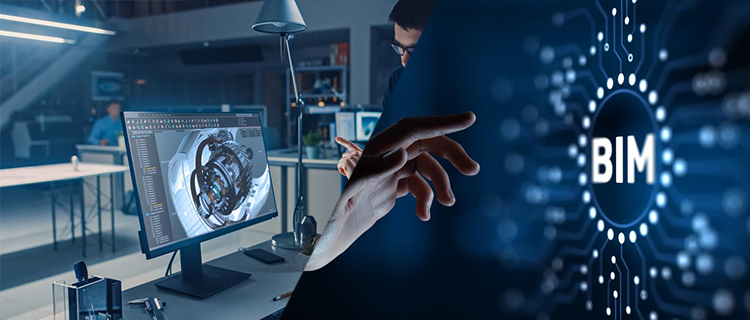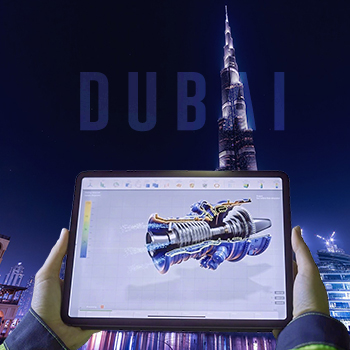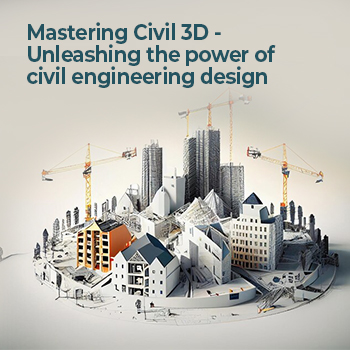
BIM vs CAD: Exploring the Differences and Benefits
In the realm of technologies, industries, and construction, we always come through the terms: CAD and BIM. Can we use these terms interchangeably? So, how will we distinguish these two? (Building Information Modelling) is software that is used in the documentation and designing of buildings. Where areas, CAD (Computer-Aided Design) is a technology that is involved with the structuring of toys and equipment automatically. Technical persons use both BIM and CAD to present their models for various needs. Not only in the field of professionalism, it is also used in the day-to-day activities of everyone in this digital era.
Understanding BIM (Building Information Modeling) and CAD (Computer-Aided Design)
BIM has created modifications in the construction arena by giving digital shade to the construction plans done
earlier by human hands. It is a method of producing a virtual model of the building intended to have been constructed.
This software creates plans for constructing commercial buildings such as shopping malls, airports, hospitals, etc.
On the other hand, CAD is software used to produce exact patterns and technical illustrations for the outputs produced
in a firm. The illustration can be created in the form of 2D or 3D forms. This technology is often considered the "First
available commercial technology for drafting purposes." Majorly, it is used in industries for the production of equipment
ranging from aeroplanes to iPhones.
Key Differences between BIM and CAD
Even though BIM and CAD have their use for construction purposes, they also have significant differences as well.
BIM is focused on the design and documentation of buildings. The data contained in the figure assist us in analyzing
how that pattern will perform in reality. BIM files give users an ideal structure and make it easy to build the exac
t one. It is a perfect way for landscape designers to abstract intelligent, well-organized terrains.
CAD is a multi-purpose design tool for creating building patterns for machinery and furnishing. It also gives figures
for toys and equipment and draws floor plans. BIM illustrations are used to compute project costs and assess irrigation
systems and growth rates.
Advantages of BIM over CAD
Some features of BIM suggest it stands better than CAD. The efficiency and automated features of this software are its
major attractions. In construction, 2D CAD must be updated for those searching for 3D visualization. Using BIM, Sharing
files, making interferences, and optimizing energy can be finished more effortlessly.
While using CAD, designers must recheck the drawing at the final stage for further generation. But BIM avoids the
re-examining step by using its automated feature. BIM regulates the parametric alterations of an aspect about other aspects.
But in CAD, it is required to update every part of the design to display changes in the structure
Advantages of CAD over BIM
Even if BIM takes over CAD's position in the construction empire, CAD stands better in some areas. In the case of detailed technical drawings, CAD overrides BIM with its expertise in structuring, specifying, and elaborating technical illustrations. CAD got prominent over decades in the zone of construction because it is deeply studied and widely accepted by professionals. Where areas BIM lacks prominence with its freshness of methodology and shortage of specialists. For smaller projects, CAD seems worthy. But in the case of BIM, it needs a significant initial investment.
Real-life Applications: When to Use BIM and CAD
Construction groups use BIM to install highways, bridges, and monuments. It also helps to understand the compatible
soil to the building. This software is also used to detect any errors that primarily appeared in a proposed plan before
the beginning of the construction. BIM technology is utilized to find the clashes in the proposed layout and underground
condition of the site.
In contrast, CAD analyzes a proposed design from inside and outside angles. If we made an illustration of a car, we could
look at it from its diverse parts as an exact one. Before the arrival of CAD, measurements and calculations were done by
human hands, and this part spoils most of the time. When CAD marked its emergence, all measures were corrected by the
technology itself. Validation tools of CAD were packed with fundamental analysis, visualization, and documentation,
so it produced designs highlighted with geometric accuracy.
Conclusion: Making the Right Choice for Your Projects
The question of the right choice differs according to the situation. Choosing between BIM (Building Information Modeling) and CAD (Computer-Aided Design) depends on your project's specific needs and nature. If the project is smaller, CAD is the apt one. On the other hand, in the case of complex projects, BIM boosts its efficiency. BIM transcended CAD because of its efficiency and multi-dimension features. For citadel modeling and surveying crews, BIM helps understand the ground dimensions of the proposed plan.





 Testimonials
Testimonials Video Testimonials
Video Testimonials News & Events
News & Events Course Enquiry
Course Enquiry Achievements
Achievements Job Opportunities
Job Opportunities Image Gallery
Image Gallery Video Gallery
Video Gallery Overview
Overview Vision Mission
Vision Mission Collaboration
Collaboration Careers
Careers Contact Us
Contact Us






